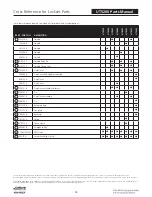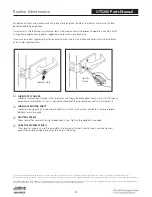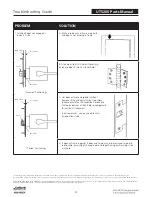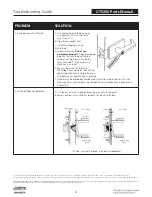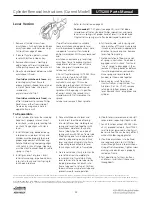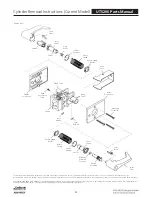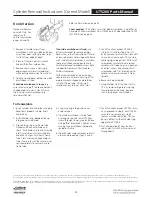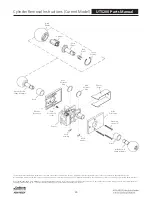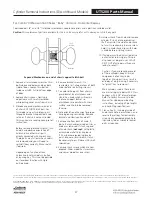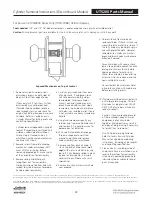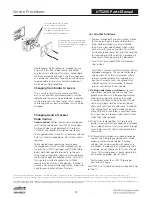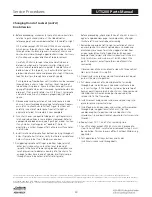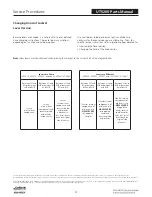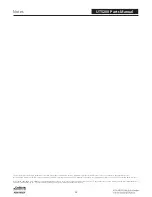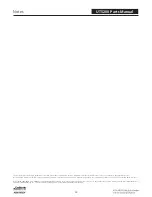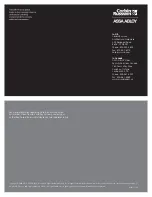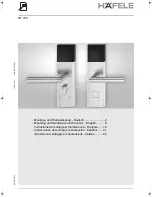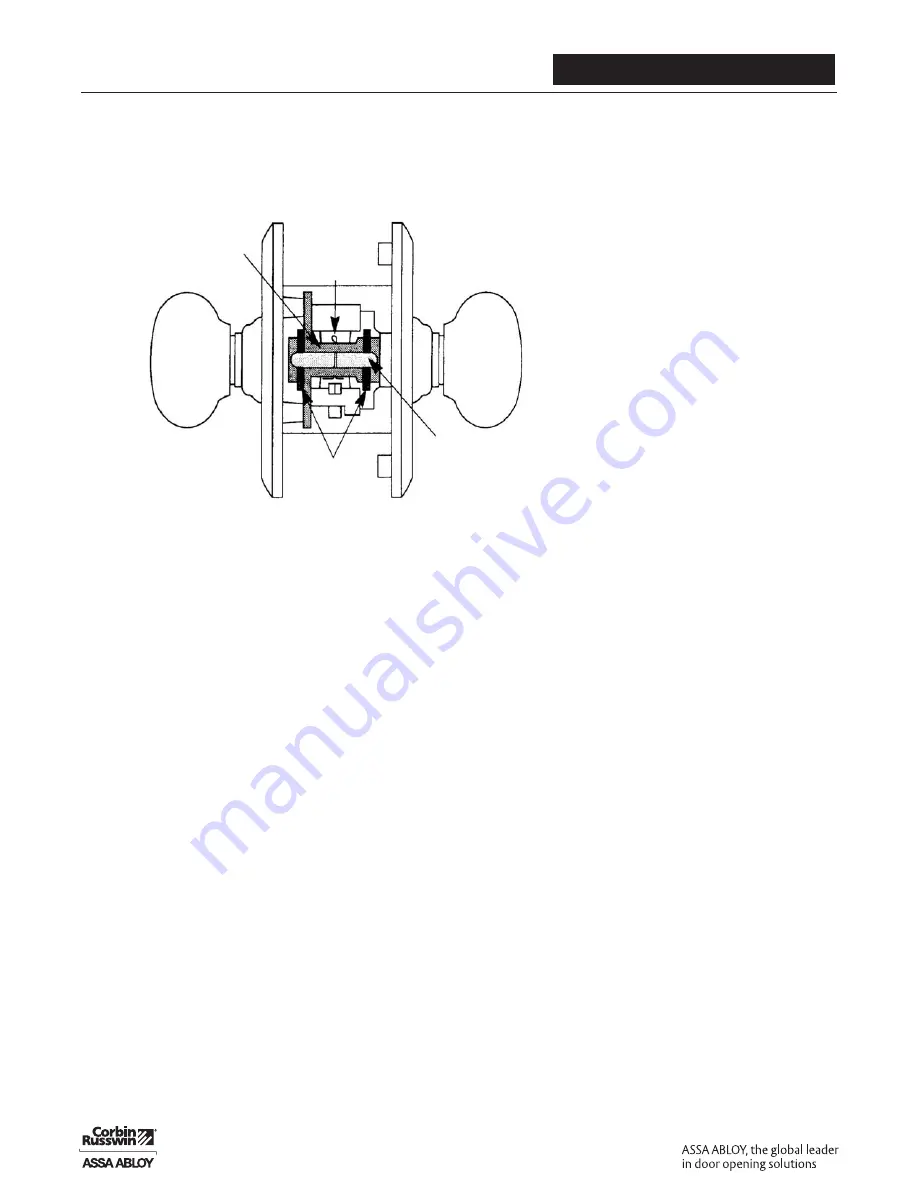
36
The warranty on Corbin Russwin products becomes void if the product is modified in any way, regardless of whether the modifications causes or contributes to any alleged defect. If a
Corbin Russwin product is modified it may no longer meet industry certification and quality control standards applicable to the original product and is no longer a genuine Corbin Russwin product.
Copyright © 1999-2018, ASSA ABLOY Access and Egress Hardware Group, Inc. All rights reserved. Reproduction in whole or in part without the express written permission of ASSA ABLOY Access
and Egress Hardware Group, Inc. is prohibited. Patent pending and/or patent www.assaabloydss.com/patents.
Cylinder Removal Instructions (Discontinued Models)
UT5200 Parts Manual
For Corbin 2000/2200/2400 and 500 Series (1899-1963) Vertical Keyway
Tools needed:
1/8” and 1/4” flat blade screwdrivers, needle nose pliers and a plastic or rawhide mallet.
Caution!
No replacement parts are available for this lock. Be very careful not to damage or distort any parts.
1. Remove thru-bolt and remove all
escutcheon screws on both sides of
door. Pull lock from edge of door.
2. Remove chassis cover. Gently pry
edges loose with small screwdriver
while pulling cover away from chassis.
3. Observe exposed mechanism on end
of chassis OPPOSITE latch bolt. For this
model, a Cotter key passes through
ribs in the chassis and covers strip of
steel with rounded ends. If chassis is
not constructed this way, you are
reading wrong set of instructions.
Before removing Cotter key, turn
knob(s) and observe orientation of
hubs and any other small parts directly
connected with knob shanks. These
parts may fall out when knob(s) are
removed and you will need to reinstall
them correctly. Make sketch if desired.
Depending on function of lock, unlock
knobs by pressing stopworks button
on lock front, by turning knurled
ring around inside knob shank, or by
using key. This may not be possible on
certain function with rigid knobs.
4. Remove cotter key and steel strip
under it. If only one knob is to be
removed, locate its flat steel retaining
plate and remove it. Leave retainer in
place for other knob.
5. To avoid spilling parts from chassis,
grasp lockset by escutcheons and
stand it on knob which will remain in
place. Support lockset so escutcheons
are parallel with work surface, and
knob to be removed faces up.
6. Note orientation of keyway for proper
handling during reassembly. Slowly
pull knob off.
7. Remove cap from back of knob. If
loose, it may have remained on trim as
knob was removed. If stuck, rap end
of knob shank (not cap!) with plastic
or rawhide mallet to jar cap loose. If it
has become sealed in place by paint,
lacquer or brass polish, it may be
necessary to pry it loose with small
screwdriver.
8. Remove two shank screws which are
now exposed. Early models have only
one screw.
9. Unscrew shank from knob and
remove cylinder. If shank is stuck,
rap area with plastic mallet to jar
loose. If this fails, knob may be held
snugly in vise with protective cloth.
However, remember iron knobs can
crack or break and brass knobs may
become distorted if abused. Place
screwdriver shaft across slot in end of
knob shank to turn. If shank still does
not unscrew, soak knob assembly
in penetration oil or use ultra-sonic
cleaner. Rap again.
On reassembly, be sure screw hole(s)
in knob shank align with holes in
knob before installing screws.
10. If cylinder must be dismantled, drive
out actuator retaining pin. This pin
also serves as plug retainer. LEAVE
KEYS OUT of cylinder until you are
ready to rekey it.
Caution:
If you are rekeying several
of these cylinders, keep all major
components of each cylinder
together. Mixing parts may result
in end play of plug, making it
necessary to “pinch” key to
remove it.
Most cylinders used in these locks
are master ring cylinders with X
Class keyways and require .509”
diameter plug follower. Refer to
Corbin Russwin Cylinder Manual for
cylinder combinating instructions,
including all pin lengths and key
bitting specifications.
11. Clean all parts, including inside of
knob shank hole in escutcheon, and
reverse these steps for reassembly.
Use only dry powdered graphite to
lubricate cylinder. Lubricate lockset
parts as required.
Ribs
Knob
Retainers
Steel
Strip
1 or 2
Cotter Pins
Exposed Mechanism on end of chassis opposite latchbolt







